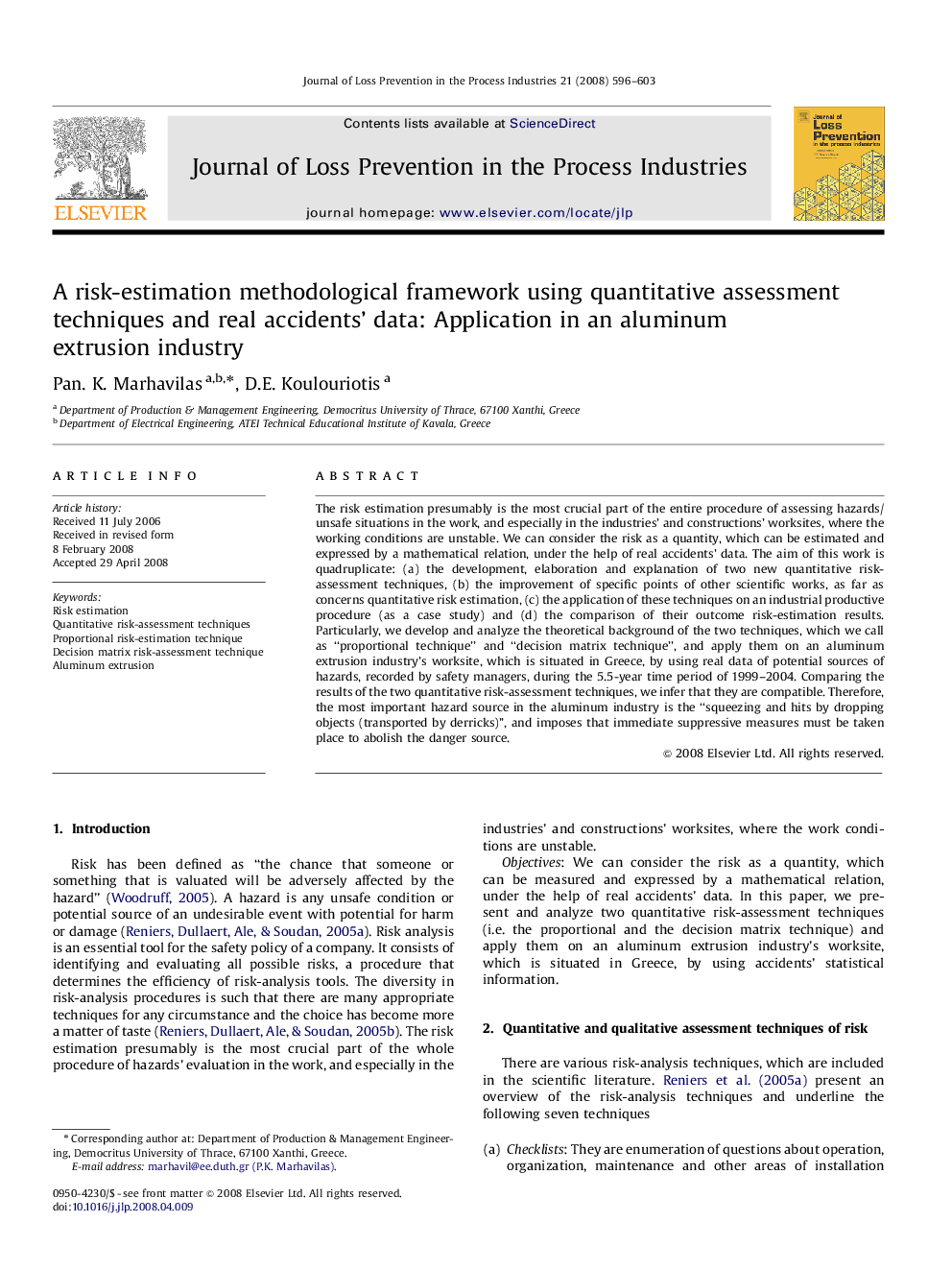| Article ID | Journal | Published Year | Pages | File Type |
|---|---|---|---|---|
| 586584 | Journal of Loss Prevention in the Process Industries | 2008 | 8 Pages |
The risk estimation presumably is the most crucial part of the entire procedure of assessing hazards/unsafe situations in the work, and especially in the industries’ and constructions’ worksites, where the working conditions are unstable. We can consider the risk as a quantity, which can be estimated and expressed by a mathematical relation, under the help of real accidents’ data. The aim of this work is quadruplicate: (a) the development, elaboration and explanation of two new quantitative risk-assessment techniques, (b) the improvement of specific points of other scientific works, as far as concerns quantitative risk estimation, (c) the application of these techniques on an industrial productive procedure (as a case study) and (d) the comparison of their outcome risk-estimation results. Particularly, we develop and analyze the theoretical background of the two techniques, which we call as “proportional technique” and “decision matrix technique”, and apply them on an aluminum extrusion industry's worksite, which is situated in Greece, by using real data of potential sources of hazards, recorded by safety managers, during the 5.5-year time period of 1999–2004. Comparing the results of the two quantitative risk-assessment techniques, we infer that they are compatible. Therefore, the most important hazard source in the aluminum industry is the “squeezing and hits by dropping objects (transported by derricks)”, and imposes that immediate suppressive measures must be taken place to abolish the danger source.
